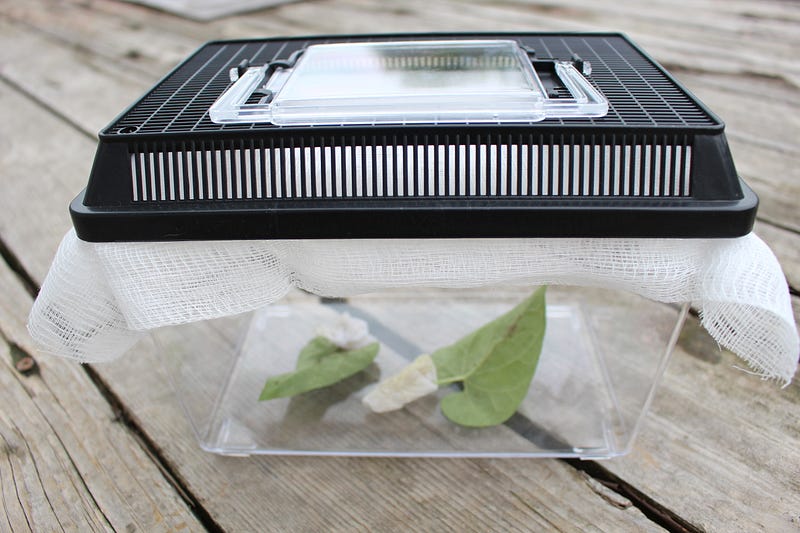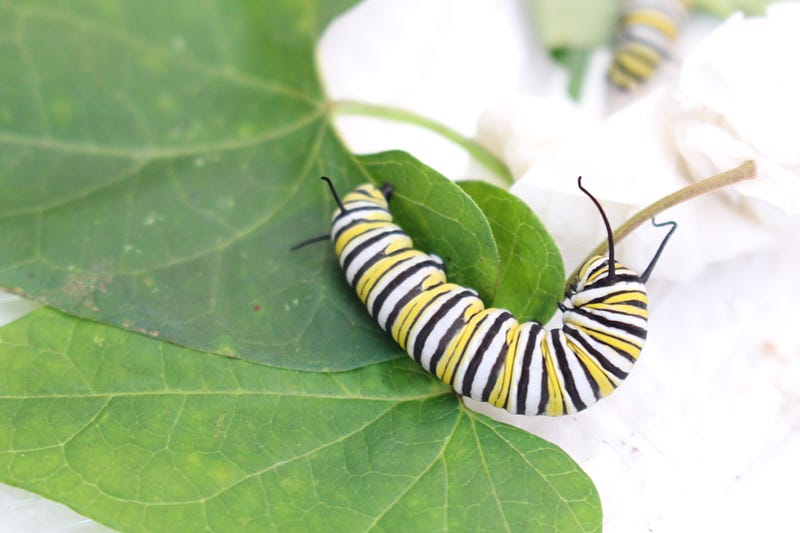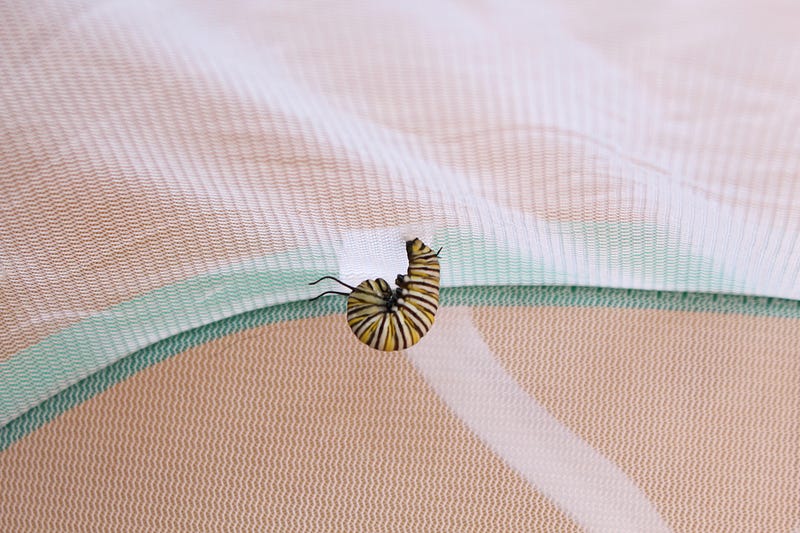Title: Join the Fight to Save Monarch Butterflies: My Journey
Written on
Chapter 1: My Monarch Journey Begins
The Monarch Butterfly populations are dwindling, but their struggle for survival is far from over. In a previous discussion titled "Where are the Monarchs?", I highlighted the alarming decline of these stunning insects. Across North America, there are urgent calls to action to safeguard these remarkable creatures that have created cherished memories for countless individuals. This year, I’ve decided to actively contribute to their preservation. Through a series of articles, I plan to document my experiences, hoping you will find inspiration in my successes and setbacks, and feel motivated to take part in the effort to protect Monarchs.
Week one has come to a close. Technically, my preparations began months ago when I planted Milkweed seeds, the essential host plant for Monarch caterpillars. I also introduced various plants to support other pollinators, aiming to nourish adult butterflies, bees, and various insects crucial for pollination in our gardens. Unfortunately, due to either poor seed quality or excessive rainfall this spring, the Milkweed seeds failed to sprout.
As my vegetable garden developed, however, I discovered some vining Milkweed starting to emerge. Although I had previously regarded this as an invasive species, and had pulled it out multiple times without recognizing its importance, I chose to let some grow this time. I designated a specific area in my garden to monitor and hopefully control their growth.
As the summer progressed, my hopes began to fade as I found no signs of Monarch caterpillars. The first generation lays its eggs in March and April, and my checks revealed nothing. The second generation emerges in May and June, but again, no eggs were found. The third generation appears in July and August, followed by the fourth in September and October. After checking throughout most of July and August, I lost all hope. Then, while gathering tomatoes from nearby plants, I spotted a small creature with black, yellow, and white stripes munching on a Milkweed leaf — a Monarch caterpillar! Upon closer inspection, I discovered three caterpillars over an inch long, several smaller ones, and even some eggs.
After conducting some research, I learned that caterpillars face numerous predators. When raising them indoors, selecting younger caterpillars can lower the risk of introducing parasites. However, with severe winds and storms forecasted for that evening, I decided to bring in the three largest caterpillars along with four tiny ones close to the second instar stage.
1st Instar: 2–6mm
2nd Instar: 6–9mm
3rd Instar: 10–14mm
4th Instar: 13–25mm
5th Instar: 25–45mm

One of the first lessons I learned was to thoroughly inspect the leaves before bringing them in for feeding. I thought I had checked well enough, but I ended up bringing in two leaves that contained Monarch eggs! This added the responsibility of raising two additional Monarch eggs to my list.

A family member gifted me a netted enclosure for Monarchs, which is widely available online and greatly reduces the chance of caterpillars escaping. It also ensures good ventilation. Since I only had one enclosure, I purchased two medium-sized reptile carriers from a local pet store for my smaller caterpillars and eggs. Some people opt to use a lidded Tupperware for egg incubation, opening it periodically to provide oxygen.
During my first week, I learned several valuable lessons.

Lesson 1: Large caterpillars require a significant amount of food! Ensure you have a sufficient supply of Milkweed before bringing them indoors. The Milkweed should be free of pesticides and chemicals. Keep an eye out for predators like flies, wasps, and spiders. It's crucial to wash the Milkweed before serving it. Some people use potted plants, while others prefer floral containers to keep the stems upright. I take clippings and wrap damp paper towels around the base to maintain moisture, but this means I need to clean the enclosure more frequently. Do not feed caterpillars leaves that have mold or are dried.

Lesson 2: Caterpillars produce a lot of waste! What goes in must come out, and it can accumulate quickly. Caterpillar droppings, known as "frass," can lead to unhealthy living conditions. It's advisable to clean their enclosures every 1–2 days, but I prefer to clean them twice daily after seeing how much waste accumulates in just one day. In the netted enclosure, I find cleaning easier if I place a plastic tray at the bottom. I move the caterpillars to a clean tray, provide fresh food, and then return them, allowing me to clean the soiled tray separately.
Lesson 3: Unexpected events happen, but do your best. During my first week, I faced two unfortunate situations. One of the larger caterpillars began to J-hang, a position they adopt before becoming a chrysalis, but it was noticeably smaller than the others, which caused me concern. After 24 hours, it appeared to deflate, indicating it was likely infected by a parasite. I was aware of the risks when I opted to bring in larger caterpillars, but with a storm approaching, I felt it necessary to move them indoors. Additionally, the second egg I had brought in never hatched — eggs typically hatch within 3–4 days, with a black tip indicating readiness. Experts believe that less than 10% of Monarch eggs survive to become butterflies. Given this, I feel optimistic about the chance I’m providing to the remaining caterpillars.

At the week's conclusion, I now have one chrysalis (formed on 8/26), one caterpillar in the J-hanging position, two third-instar caterpillars, two second-instar caterpillars, and one newly hatched caterpillar. Moreover, I have discovered additional caterpillars outdoors on my Milkweed plants. As I am still learning, I’ve opted to leave these caterpillars outside to avoid overwhelming myself and the ones already in my care.
Onward to week 2 of caring for Monarchs!
Chapter 2: Week 2 Insights
The Monarch population has significantly decreased, but the struggle to save them is just beginning. Last week, I introduced my mission...
In the first video titled "Hello Little One, A Monarch Story" by Zeena M Pliska and Fiona Halliday, Dana Reads presents a heartwarming read-aloud. This story sheds light on the life of Monarchs and encourages young readers to appreciate nature.
The second video, "Butterflies Belong Here," emphasizes the importance of Monarchs in our ecosystem and invites viewers to become advocates for their protection.
Chapter 3: Ongoing Challenges
Over the past two weeks, I’ve found joy in sharing my experiences raising Monarch Butterflies indoors as a result of...
Chapter 4: Understanding the Decline
The vibrant orange and black patterns of the Monarch Butterfly have adorned North America for generations. However, as we delve deeper into their plight...
Sources:
www.monarchwatch.org